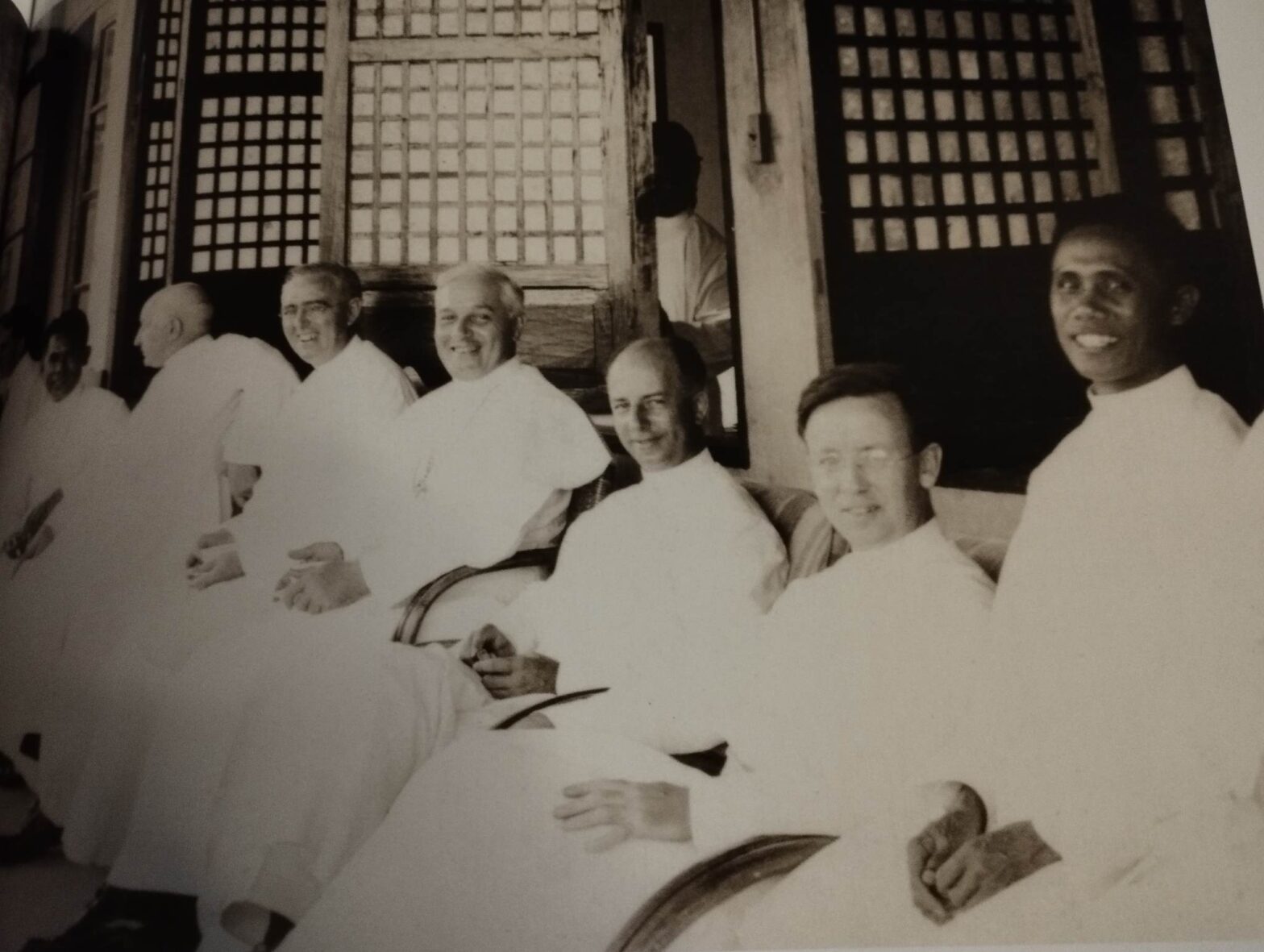Rev. Fr. James Edward Haggerty, SJ was the Rector of Ateneo de Cagayan in Cagayan de Oro when World War II broke out. He joined the Mindanao Guerillas and later became a key figure in the vast guerrilla movement in Mindanao which earned him the nom de guerre “Guerilla Padre”.

(Jesuit Archives ).
He personally met with key figures of the conflict including Gen. Douglas MacArthur at Del Monte, and key leaders of the Mindanao Resistance, which eventually became the largest and best organized in the Philippines during World War II.

The Ateneo de Cagayan closed on December 9, 1941, and on May 1, 1942 Fr Haggarty “deposited all that could be saved (library, laboratory equipment, school records) from the school in the old mission center of Sumilao. (The library, consisting of some 15,00 volumes was transported to Sumilao by Lt. Jose Villanueva, an Ateneo student, and his men). Unfortunately, on October 21, 1944, “the house in Sumilao, where the library had been stored, collapsed due to heavy rains and the collection was destroyed.”




The campus was used as the Northern Mindanao headquarters of the Japanese troops after they entered Cagayan de Oro on May 9, 1942. It thus became a target for B-24 Liberators of the US Army Air Forces’ 22nd and 43rd Bomb Groups on October 21-22, 1944 who reduced the school to rubble.
An article in the Woodstock Letters, Volume LXVII, Number 1, 1 February 1938 entitled Varia: American Assistancy listed 241 Jesuits in the Jesuit Mission of the Philippines, including two bishops, 105 Priests, 96 Scholastics, and 38 Brothers. Of the total 85 were American, 38 Spaniards, and 80 Filipinos, of whom only 19 were priests.
However, there were other “guerrilla padres” as well who served in the Mindanao resistance and continued ministering to their flock, though not necessarily with the scope and influence of Fr. Haggerty.
Take note how the term “guerrilla” is used here in the modern lexicon as an adjective, “characteristic of guerrillas; undercover, clandestine,” (Collins English Dictionary) since American priests were being hunted down by the Japanese, and thus had to go underground and find unorthodox ways to continue serving their flock.
When the war broke out, most of the priests in Northern Mindanao were foreign missionaries: Irish or Australian Columbans, American Jesuits. Those who escaped arrest by the Japanese evacuated to the interior.

Among them were Fr. Edward J. Wasil, S.J. who first hosted Fr. Haggerty when the latter was being hunted by the Japanese; Fr. Frederick W. Henfling, S.J, the veteran missionary at Tagoloan renowned for his generosity to his parishioners at the risk of his own personal health and well-being; Frs. Merlin A. Thibault, S.J. and John J. McKeaney, S.J., who worked together in Baroy, Lanao to serve their parishioners spiritual and personal needs at great personal risk to themselves from both the Japanese and hostile Moros; Fr. John A. Pollock, S.J, on Camiguin, Fr. Edward F. O’Byrne, S.J.; and not the least, Fr. Theodore A. Daigler, S.J. who was teaching at the Ateneo de Cagayan when the war broke out, then worked closely with Filipino civilians to raise crops, cattle and even had an agricultural school to teach them to supplement their food supply.
Only a few Filipino priests were left to minister to the people who remained in the towns. Fr. Isaias X. Edralin, S.J. remained in Cagayan.


(Jesuit Archives through Ramoncito Ocampo Cruz)
Fr. Agustin Consunji, S.J., went to Iligan and also covered Dansalan. Fr. Consunji became one of the Filipino Jesuits martyred during the war when he was tortured in Cagayan and later executed by the Japanese at Old Bilibid Prison for ministering to the guerrillas.


-30-

My favorite book as a boy!
Father Isaias X. Edralin, SJ is the brother of my grandfather Leopoldo Q. Edralin